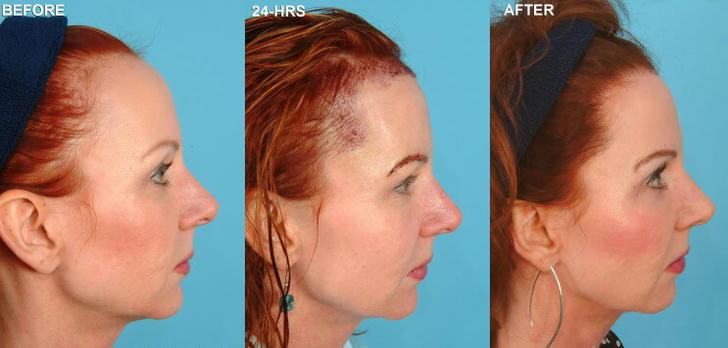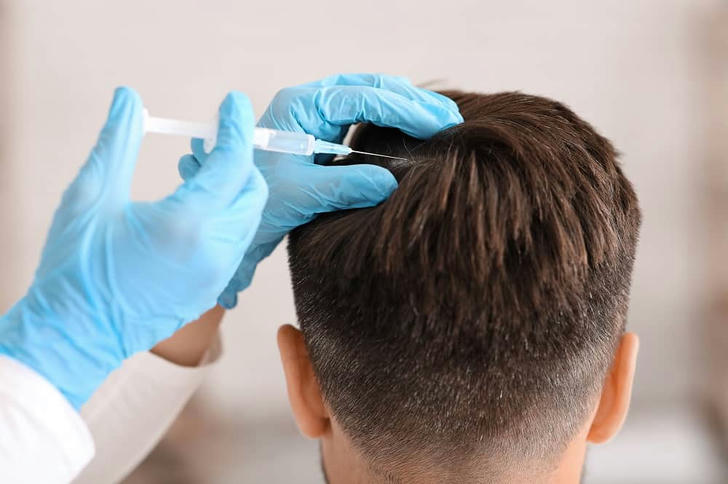Everything You Need to Know About Hair Implant Surgery: Costs, Benefits, and Risks
Hair loss affects millions of people, impacting self-esteem, confidence, and even social life. Whether you’re experiencing the early stages of hair thinning or facing a more significant hair loss problem, you’re not alone. For many, hair implant surgery offers a permanent solution to restore a fuller, natural-looking hairline. But before making a decision, it's essential to understand the full scope of the procedure, including the costs, benefits, and potential risks. In this guide, we’ll walk you through everything you need to know to make an informed choice about hair implant surgery.

What is Hair Implant Surgery?
Hair implant surgery, also known as hair transplantation, is a procedure where hair follicles are moved from one part of the body (typically the back of the head) to areas experiencing thinning or baldness. There are two primary techniques for hair restoration:
▣ Follicular Unit Transplantation (FUT): In FUT, a strip of skin with healthy hair follicles is removed from the donor area. It is then dissected into individual follicular units, which are transplanted into the thinning areas. This method can leave a linear scar in the donor area.
▣ Follicular Unit Extraction (FUE): FUE involves extracting individual hair follicles directly from the donor area using a small, punch-like tool. These follicles are then implanted into the thinning areas. FUE leaves minimal scarring and is less invasive compared to FUT, which makes it a preferred choice for many.
The Benefits of Hair Implant Surgery
Hair transplant surgery is a life-changing procedure for many people, offering more than just cosmetic improvements. Here are some of the key benefits:
1. Permanent Results
Unlike other temporary treatments for hair loss, such as shampoos, medications, or topical creams, hair implant surgery offers permanent results. Once the transplanted follicles take root and begin to grow, they behave just like natural hair, providing lasting fullness.
2. Natural-Looking Hairline
Modern hair transplant techniques, particularly FUE, are designed to mimic the natural growth patterns of hair. When done by a skilled surgeon, the results are virtually undetectable, creating a seamless transition between transplanted hair and existing hair. Many patients find that their hair looks even better than before their hair loss began.
3. Minimal Maintenance
Once the initial recovery period is over, hair implants require very little maintenance. You can wash, style, and trim your hair just as you would naturally. The process is simple and allows you to enjoy your new hair without the need for daily treatments or medications.
4. Restored Confidence
Hair loss can take a significant toll on self-esteem, and hair implant surgery has been shown to positively impact the confidence and social interactions of many individuals. For those who’ve experienced a gradual thinning or sudden balding, restoring a youthful, full head of hair can be transformational.
5. Non-Surgical Alternatives for Some
While most procedures involve surgery, some clinics now offer minimally invasive techniques like PRP therapy (Platelet-Rich Plasma) or low-level laser therapy (LLLT) as adjunct treatments to hair implants, which can further enhance hair growth and recovery. These can be explored as part of your personalized treatment plan.
Understanding the Costs of Hair Implant Surgery
The price of hair implant surgery varies depending on several factors, such as the type of procedure, the surgeon’s expertise, and the number of grafts needed. Here’s a general breakdown:
▣ Follicular Unit Transplantation (FUT): FUT typically ranges between $4,000 to $10,000 depending on the number of grafts needed. While the cost can be lower than FUE, FUT leaves a linear scar in the donor area, which may be a consideration for some.
▣ Follicular Unit Extraction (FUE): FUE is generally more expensive, ranging from $5,000 to $15,000 or more. The price will depend on the clinic’s reputation, the extent of hair loss, and the number of grafts. FUE provides a less invasive option with minimal scarring, which is why it’s often preferred.
▣ Cost per Graft: Some clinics charge $3 to $10 per graft. A typical session may involve between 1,000 to 3,000 grafts, depending on the severity of the hair loss. The total cost will reflect the number of grafts required to achieve the desired result.
▣ Additional Costs: In addition to the surgery, you might also incur costs for pre-operative consultations, post-operative care, medications, and follow-up treatments. Many clinics offer financing options to help manage the expense.
Risks and Potential Side Effects of Hair Implant Surgery
While hair implant surgery is generally safe and effective, there are some risks and potential side effects you should be aware of. Here’s what you need to know:
1. Infection
As with any surgical procedure, infection is a risk. To minimize this, follow your surgeon's aftercare instructions carefully and keep the transplanted area clean.
2. Scarring
While FUE leaves only minimal scarring, FUT can leave a linear scar at the donor site. The scar may be hidden by your hair, but it’s essential to consider if you prefer a scar-free result.
3. Temporary Hair Loss (Shock Loss)
It’s common for transplanted hair to fall out in the months following surgery. This is called shock loss and is a natural part of the hair regrowth process. Don’t worry—it’s temporary. New hair growth typically starts within 3 to 6 months and continues to improve over the next year.
4. Unnatural Results
If not performed by a skilled surgeon, hair implants can result in uneven hairlines, visible scars, or unnatural-looking hair growth. It’s essential to choose an experienced, board-certified surgeon who has a proven track record of successful hair restoration surgeries.
5. Financial Considerations
Since hair transplant surgery is typically considered a cosmetic procedure, most insurance plans do not cover it. This makes it essential to budget and plan for the procedure. Some clinics offer payment plans, which can help make the procedure more affordable.
Is Hair Implant Surgery Right for You?
Hair implant surgery can be an excellent option for individuals who have experienced significant hair loss and want a permanent solution. However, it's not for everyone. Ideal candidates are those with sufficient donor hair on the back or sides of the scalp, and good general health. If you're not sure whether you're a good candidate, a consultation with a qualified surgeon will help you assess your suitability for the procedure.

Conclusion
Hair implant surgery offers a powerful solution for restoring a natural, youthful appearance. The benefits—permanent results, minimal maintenance, and improved self-esteem—make it a worthwhile investment for many people. By understanding the costs, benefits, and potential risks, you can make a confident, informed decision about whether hair transplant surgery is the right choice for you.
If you’re ready to take the next step, the first thing you should do is schedule a consultation with a qualified surgeon to discuss your options. With the right expert, a full head of hair is within your reach—and so is a brighter, more confident you.
